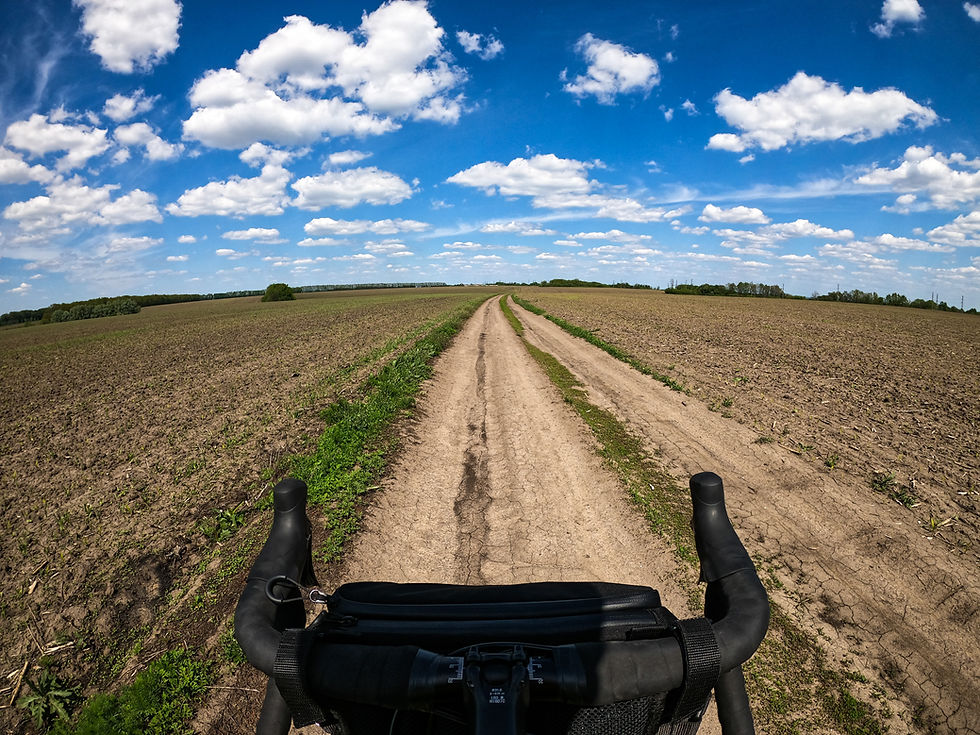Gravel Bikes Explained
- Peter Jeffers
- Nov 4, 2021
- 4 min read
Updated: Dec 14, 2022
VeloRunner are big fans of gravel bikes and the opportunities for exploration they present riders.
The popularity of Gravel bikes have exploded and It’s easy to see why, with gravel bikes offering versatility in abundance – From Commuters, Bikepacking everyday fun on a machine capable of handling the rough stuff, without handicapping itself much on the tarmac.

The drop handlebar and road bike-like design mean that you can make eat up the miles on the road, but with wider tyres, lower gearing and stable handling though slacker more open geometry you can to head on to more or off the beaten track.
Riding a bike designed for multi-terrain excursions means you can link together Gravel Routes in new ways, taking in sections of Singletrack, gravel roads, trails, byways and bridlepaths. Or you can load up your gravel bike with camping kit for multi-day BikePacking Adventures.
Like any bike category, a gravel bike from one to another with some gravel bikes leaning more towards road speed and light off-road riding, and others bearing more resemblance to mountain bikes.
Choosing the right gravel bike for you depends on the type of riding you have planned. You can call into or phone one of Velorunner experts to get the best advice on which bike might suit you the most.
FRAME
Like most other bikes, gravel bikes are made from a variety of msterials, the most common options are aluminium and carbon.
Aluminium is affordable, durable and relatively lightweight, making it a good material for a budget gravel bike.
Carbon frames are typically lighter than aluminium ones. Carbon can also be engineered to fine-tune stiffness and comfort, and can offer more opportunities for aerodynamic tube shapes.Aluminium and carbon aside, you’ll also find options for steel and titanium gravel bikes.
Geometry
Although it looks like a conventional road bike, a gravel bike is designed for more stable handling off-road. That normally means a longer wheelbase and slacker angles for the frame and forks.
Tyres
Big tyres are a defining feature of a gravel bike.
A key feature of gravel bikes is tyre size, typically 40mm or so in width. In fact, perhaps more than any other part of a gravel bike, tyre choice has a big impact on the type of terrain you can ride.
The extra volume lets you run low pressures of 40psi or less, adding comfort and traction on uneven surfaces. There will likely be a tread pattern too, to aid grip on loose surfaces.
How much tread you need depends on the conditions. Dry trails may only need a light file or diamond tread, while tyres for muddy winter tracks will have more aggressive patterns with side lugs, for extra grip and traction.
Tyres and wheels will usually be designed to run tubeless if you ask at purchase we will set this up for you FOC.
The firrence is huge letting keep tyre pressure down without the risk of punctures as the the sealant in the tyre will cope with thorns, flints and other causes of punctures, forming a seal around small cuts in the rubber before too much air escapes. The bikes handling changes to making climbing easier and giving the bike more agility all round.
A gravel bike’s frame and fork blades will be designed with enough room for large tyres, leaving enough extra space to handle any mud that they inevitably collect, though clearances do vary from one bike to the next.
Wheels
Gravel bikes can have either 700c or 650b wheels.
When it comes to wheels you often have two sizes to choose from: 650b 0r 700cc.
650b wheels have a slightly smaller diameter and can be shod with even wider tyres, for even more traction, while keeping the rolling diameter of the wheel plus tyre similar to a road bike, for comparable gearing and ride feel.
Most gravel bikes come equipped with 700c wheels and tyres as standard, with the option to swap to 650b in future if you want, but an increasing number come with the smaller size out of the box – particularly those bikes more heavily focused on off-road riding.
Disc brakes
Disc brakes are a common feature on gravel bikes.
Disc brakes are now commonplace on the latest road bikes and ubiquitous on gravel bikes. In fact, the arrival of hydraulic disc brakes for drop-bar gear shifters was the game changer for gravel bikes offering consistent, effective stopping, whatever the conditions – crucial for gravel bikes – and leave plenty of room for the wide tyres required for off-road riding.
Gearing
A 1x setup uses a single chainring with no front derailleur.
Gearing is key when it comes to set-up.
If you’re heading off-road, you’ll need lower gears to tackle steep climbs and trickier terrain. With grip reduced on loose surfaces, you can’t get out of the saddle so easily when climbing, so need to spin up the gradient to avoid wheelslip.
As a result, gravel bikes should have a compact chainsetwith a wide-range cassette, at the very least.
Double chainsets are also common on gravel bikes.
However, super compact chain sets are a common feature. Dropping the chainring sizes to 48/31t or 46/30t, like Shimanoo's GRX gravel Groupset and pairing this with an 11-32t or 11-34t cassette puts tough climbs within reach. 13x is also available from Italian style guru's Campagnola.
If you plan on riding your gravel bike off-road on steep or technical terrain, suitable gearing is vital and we’d recommend a super-compact chainset over a standard compact.










Comments